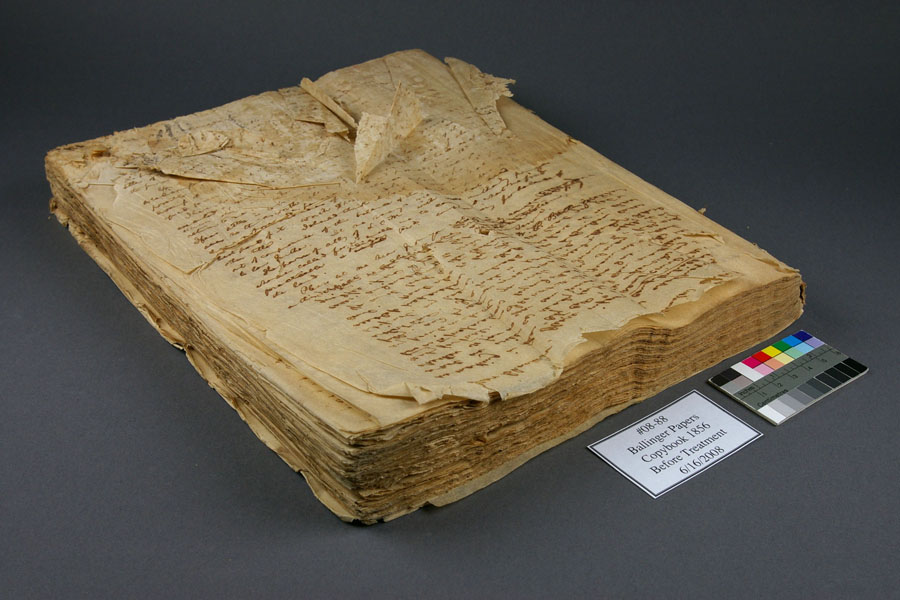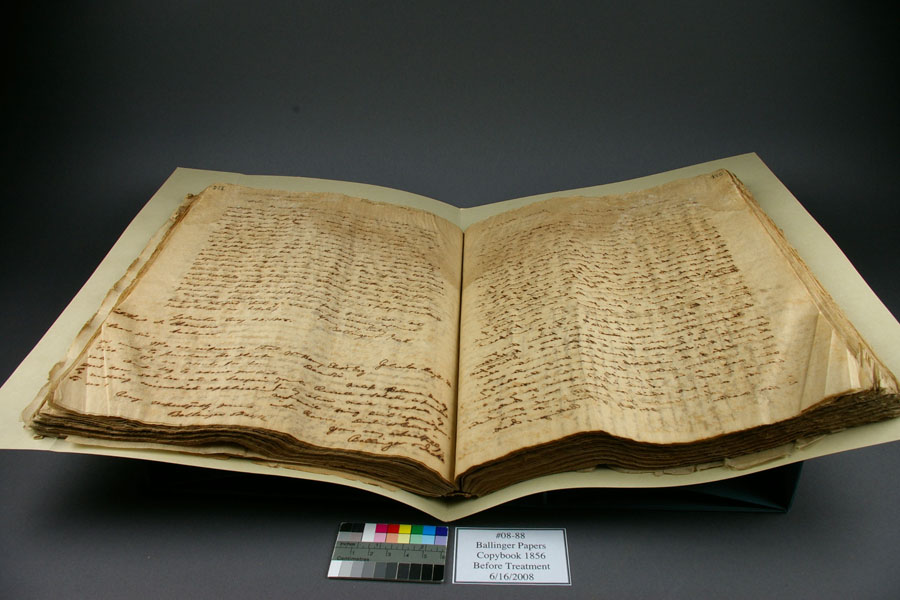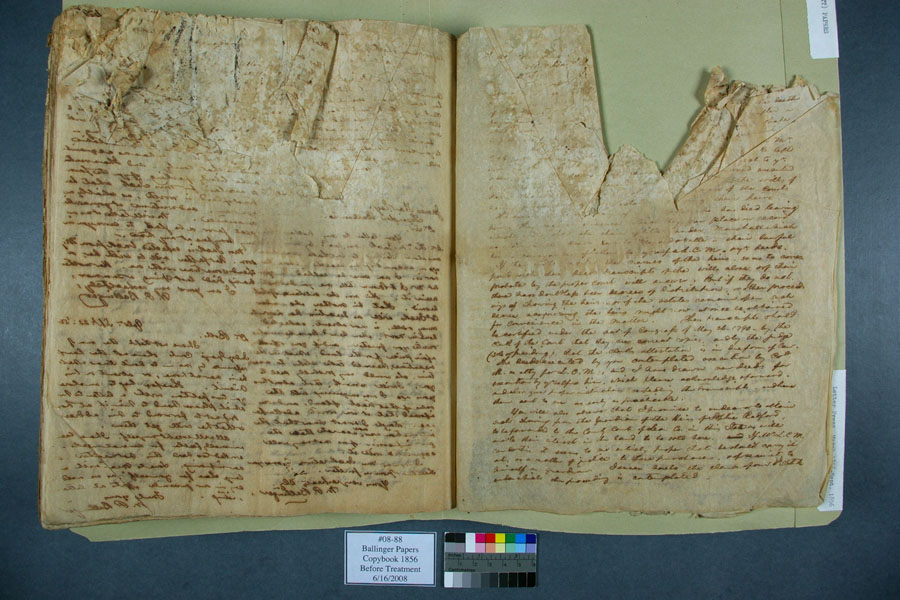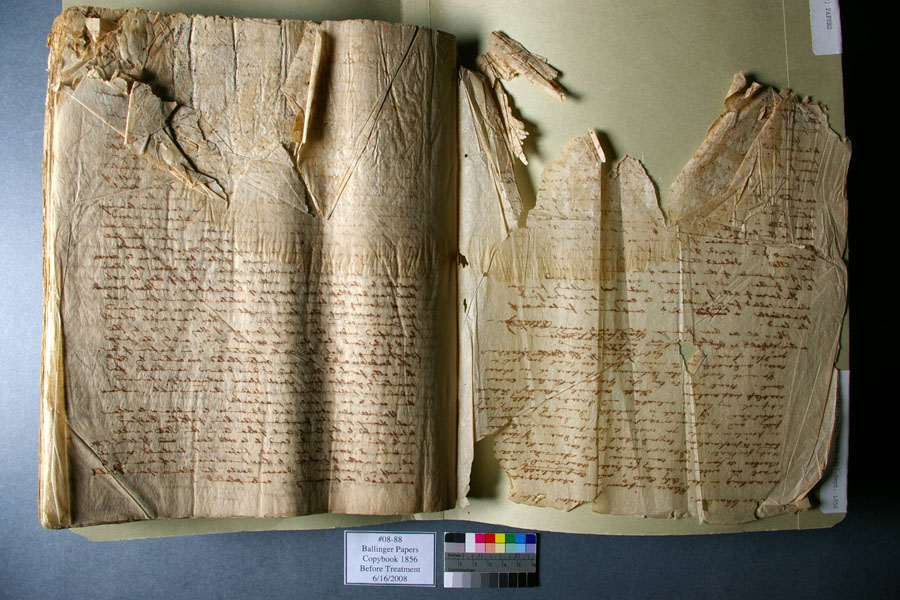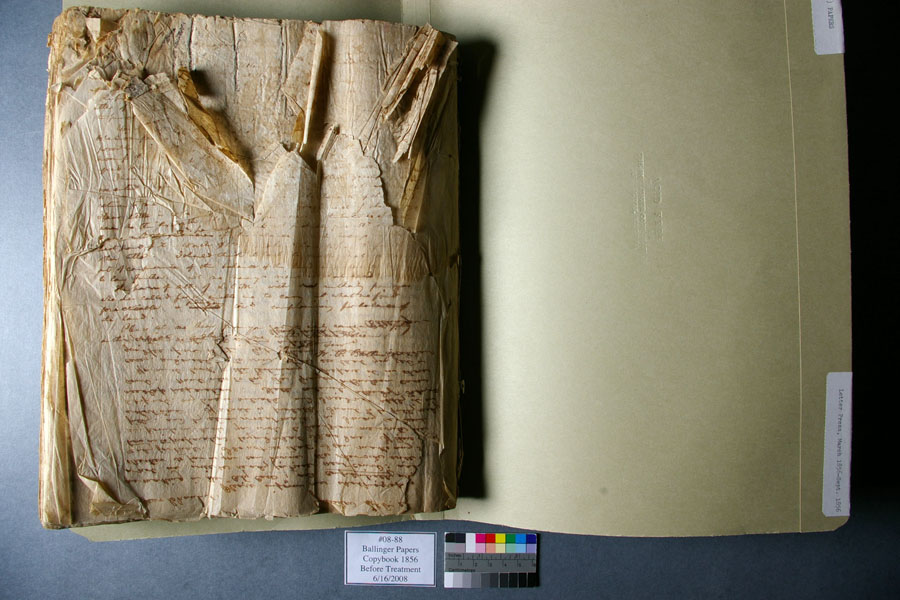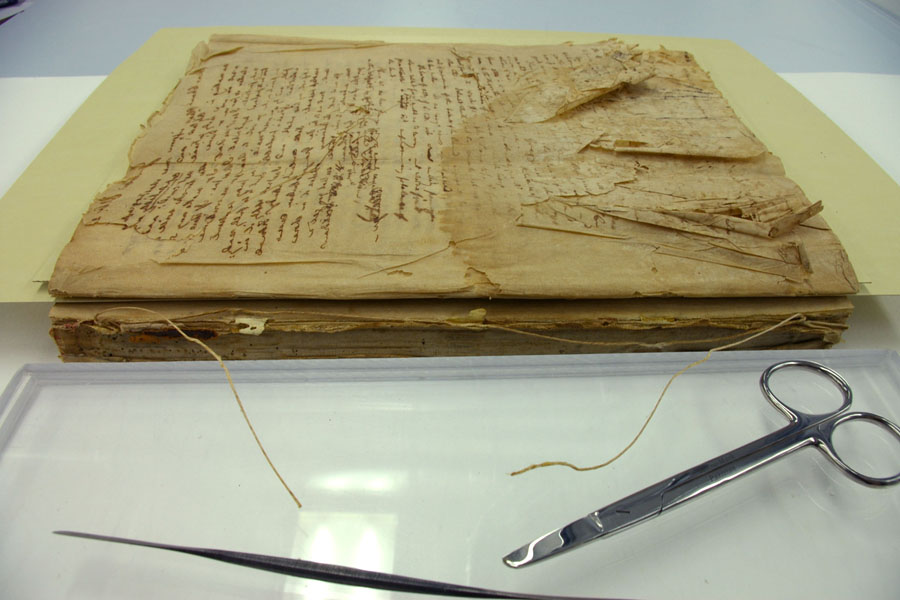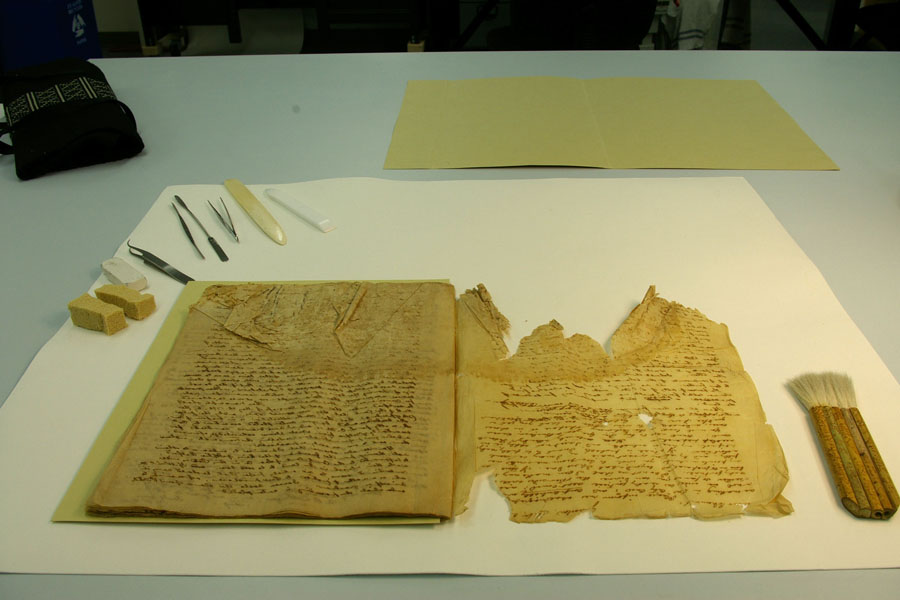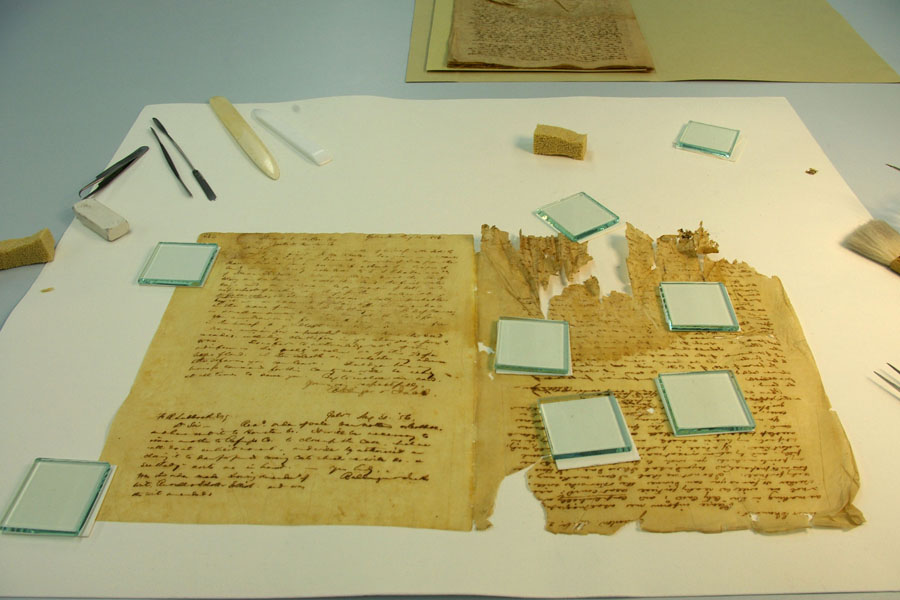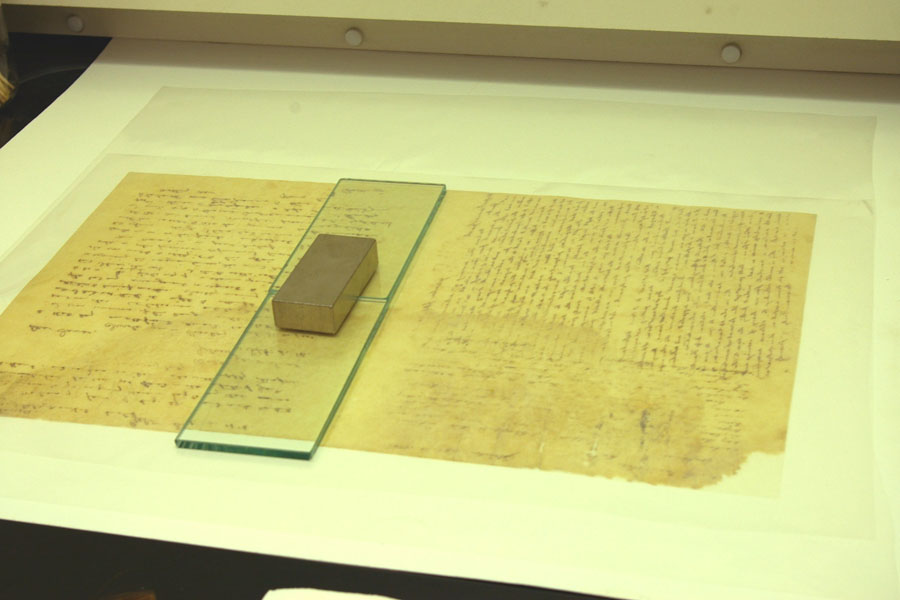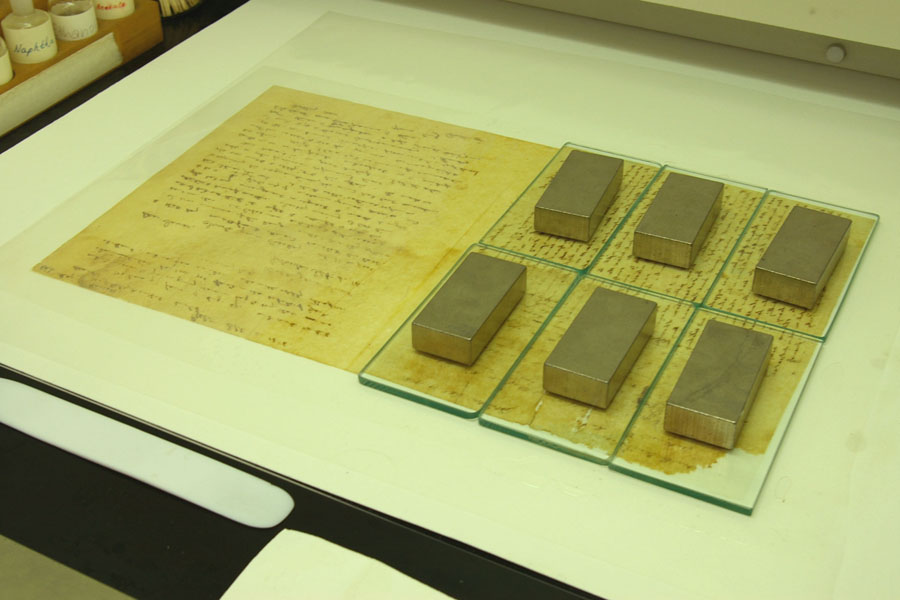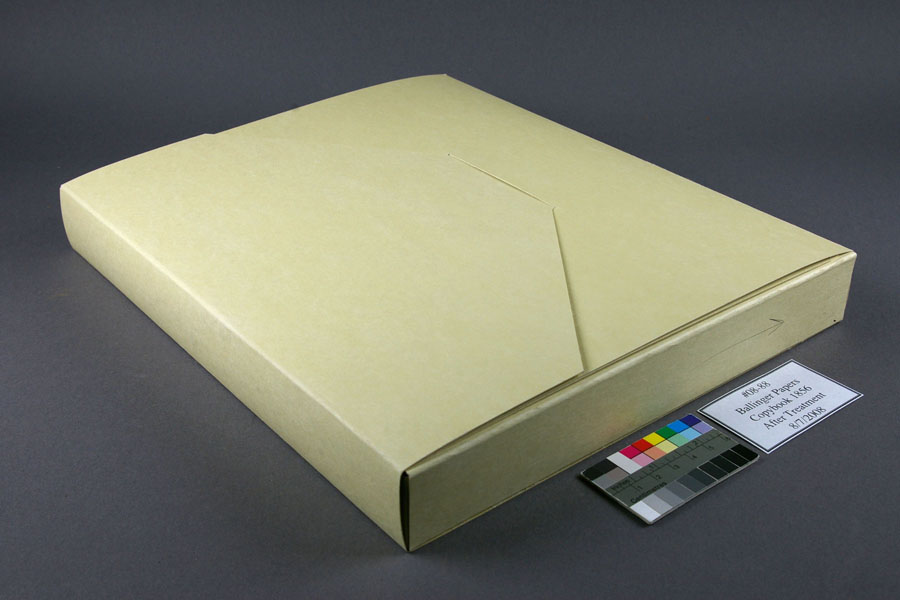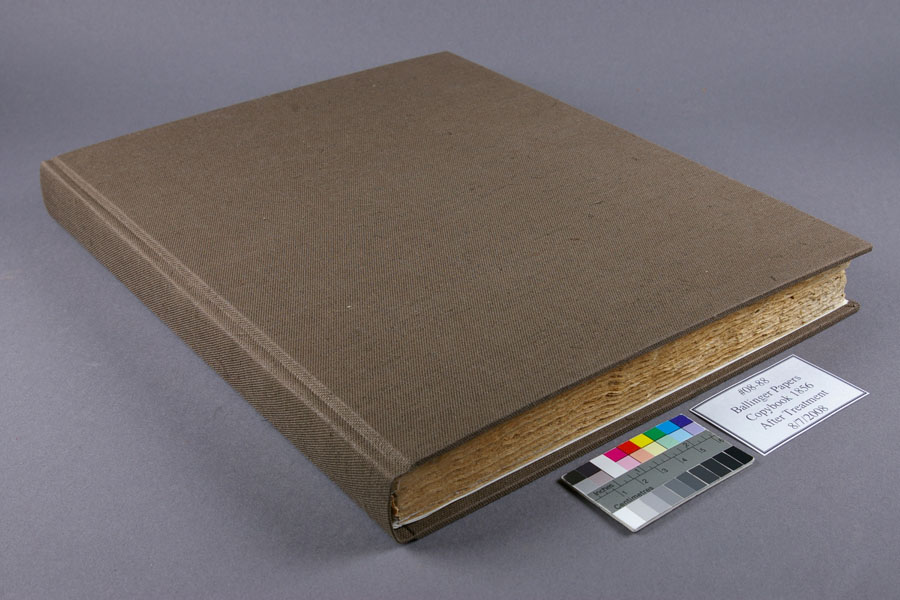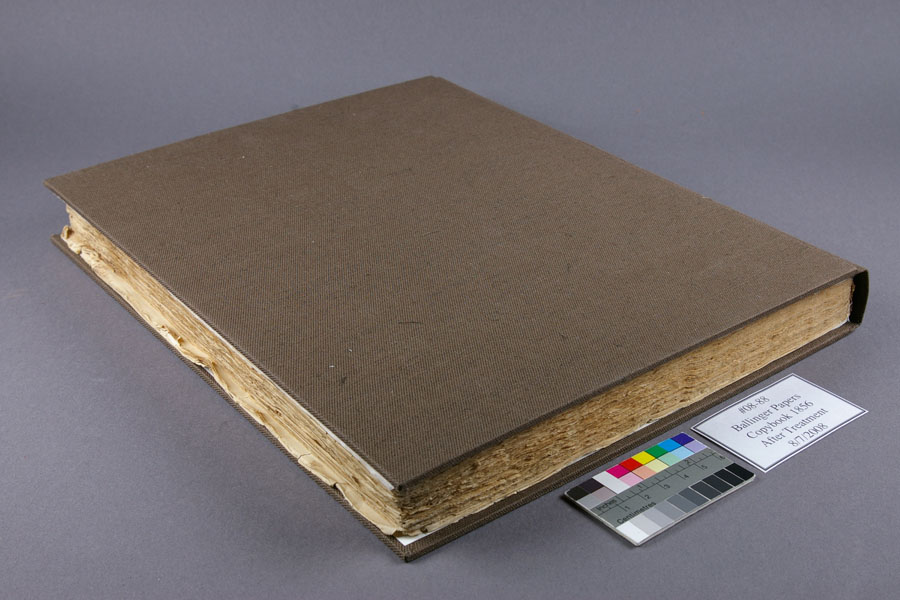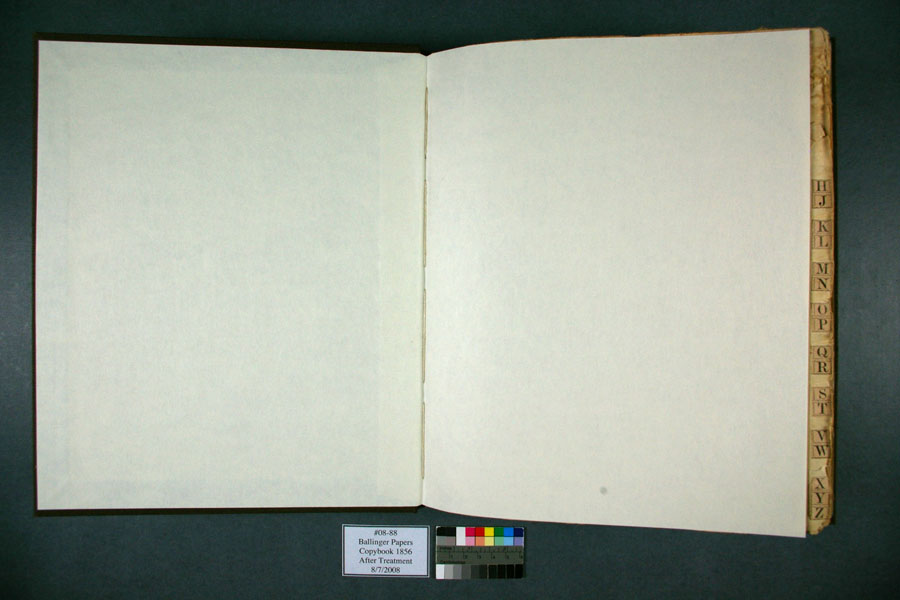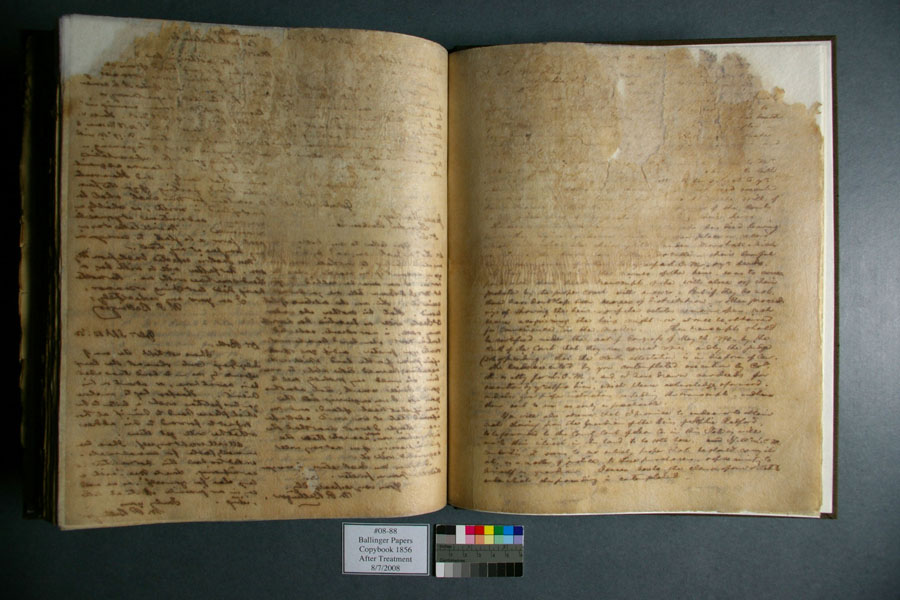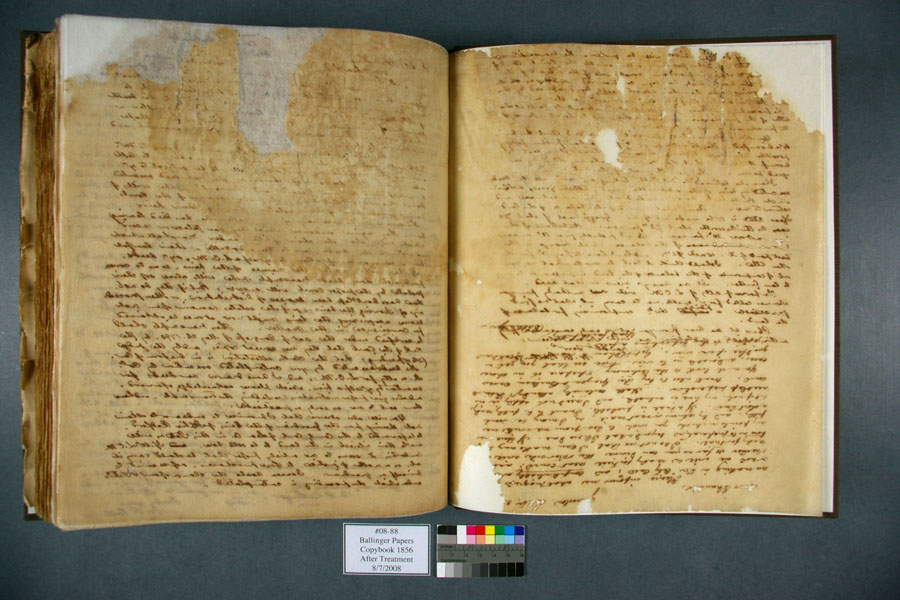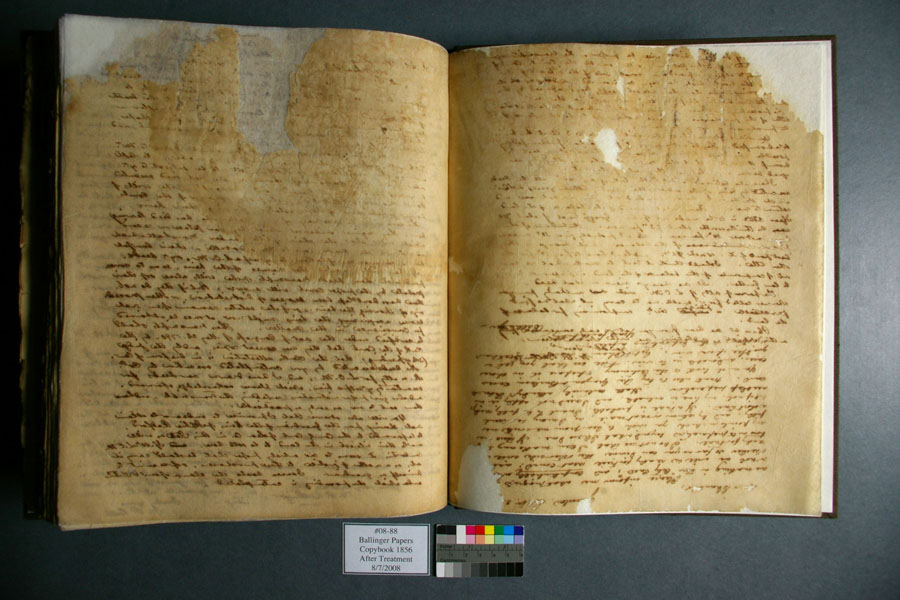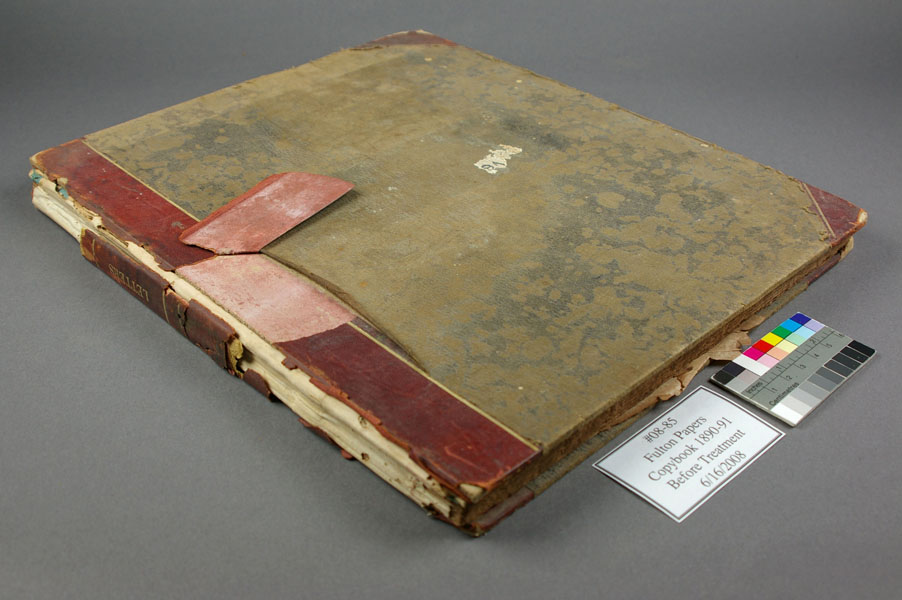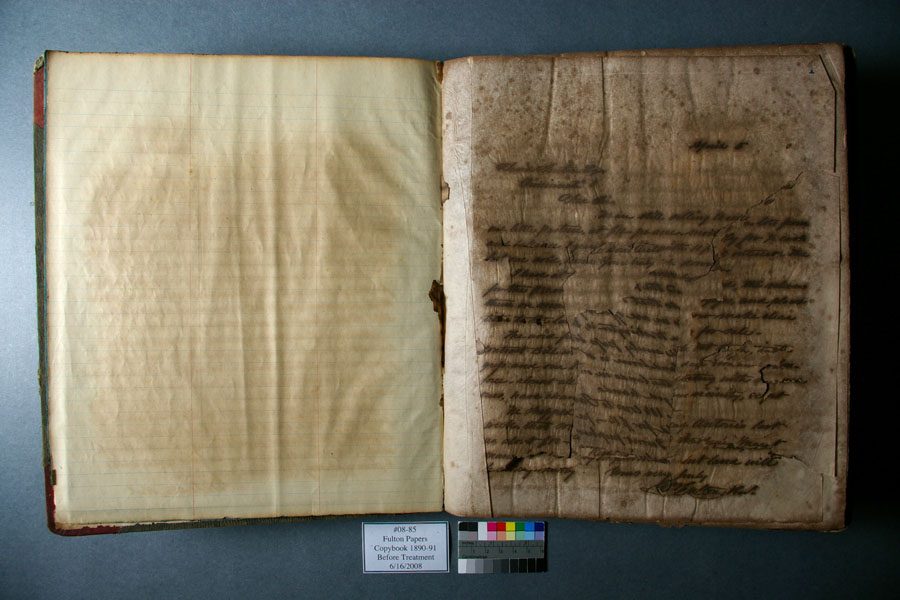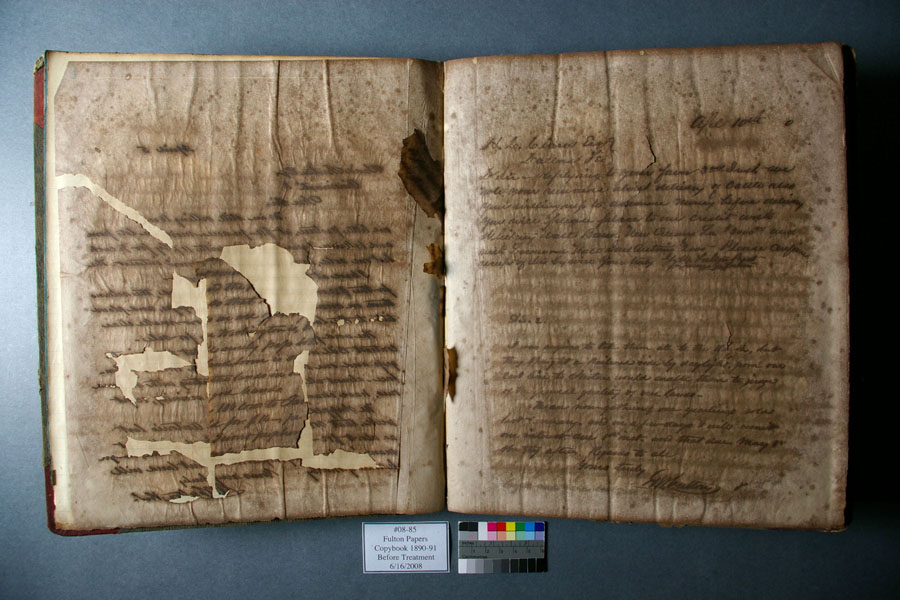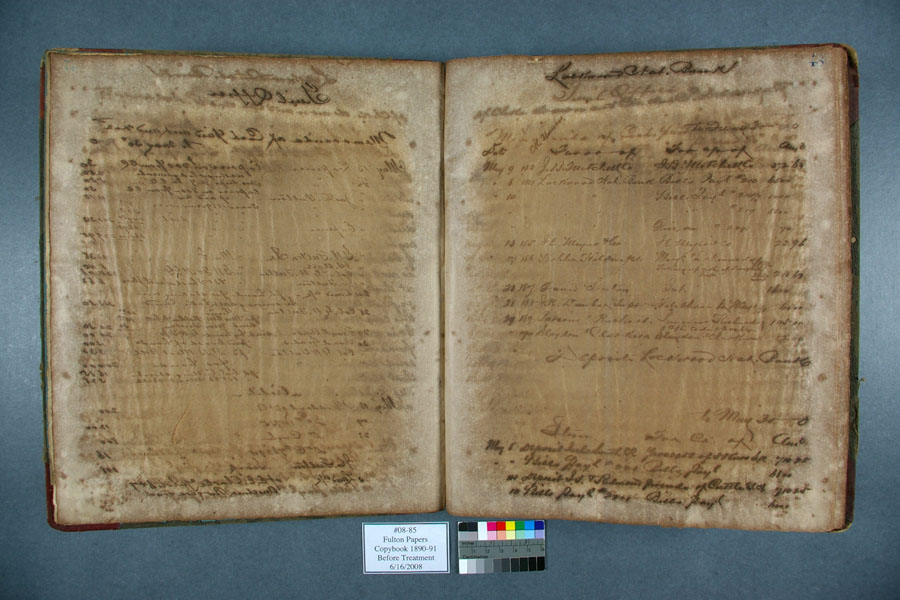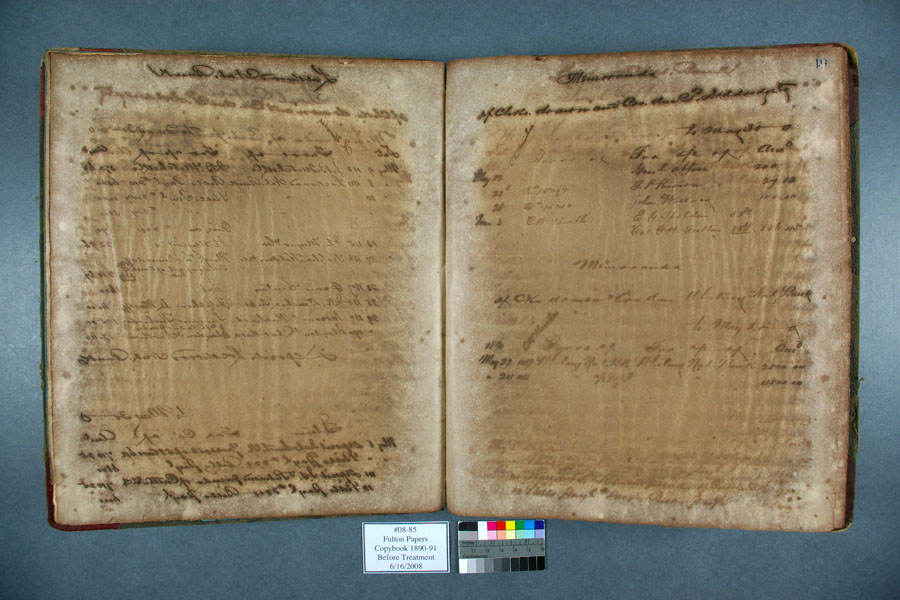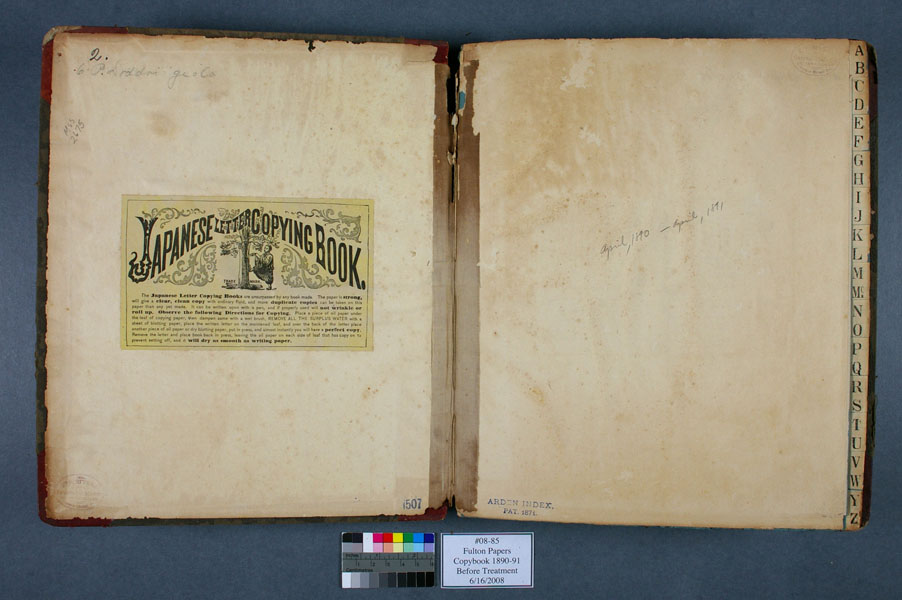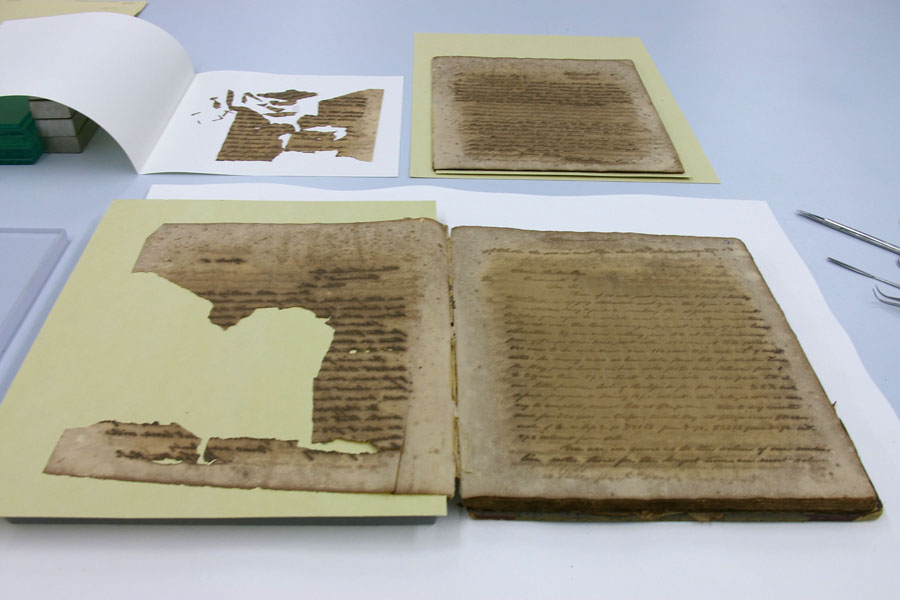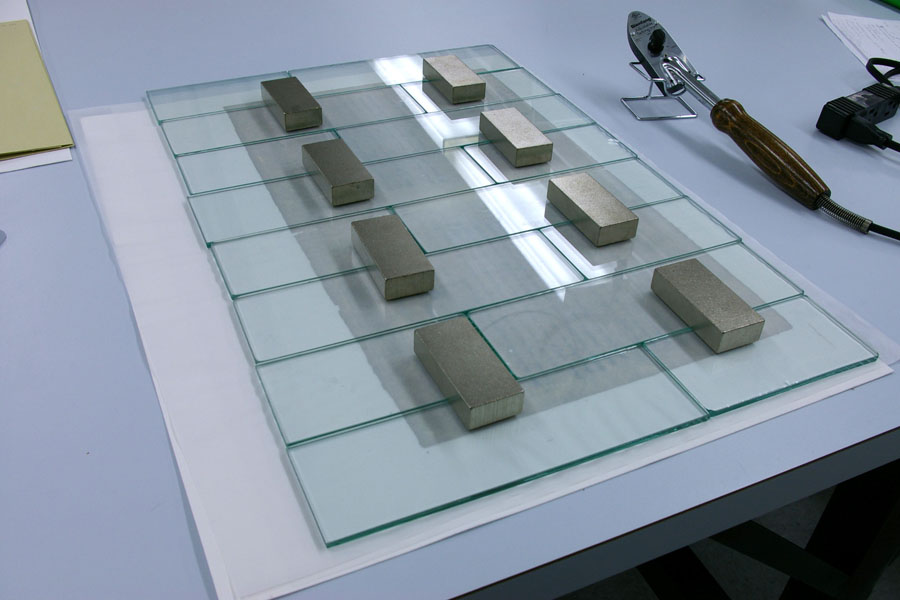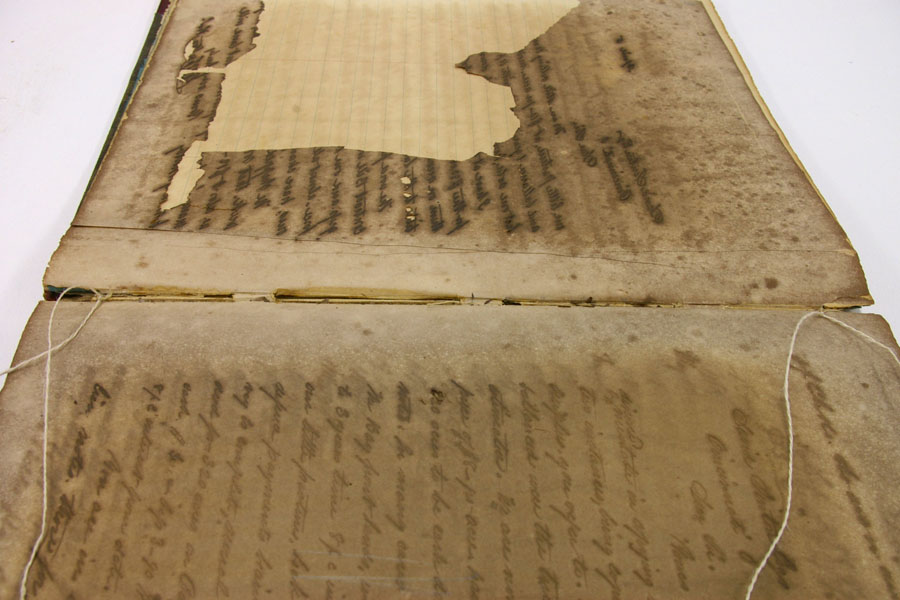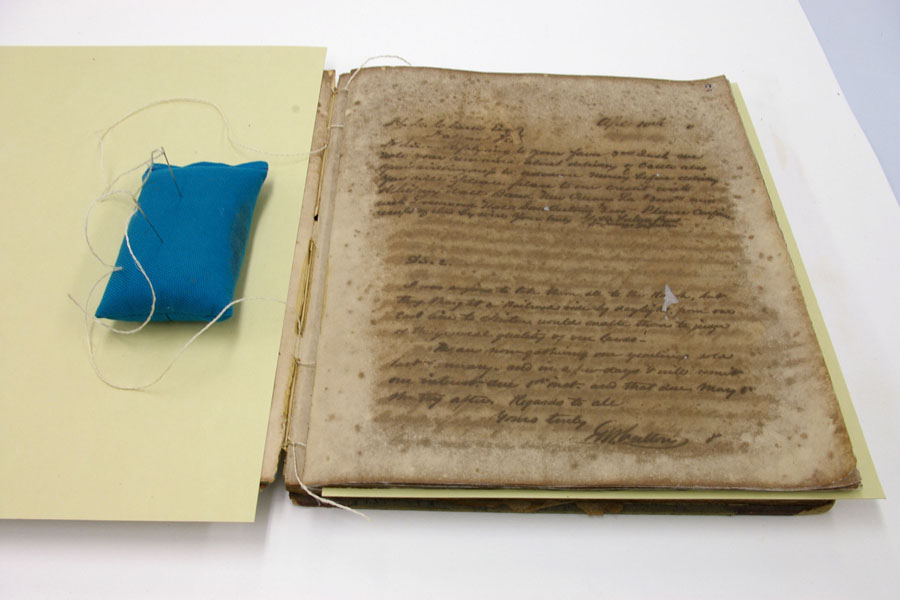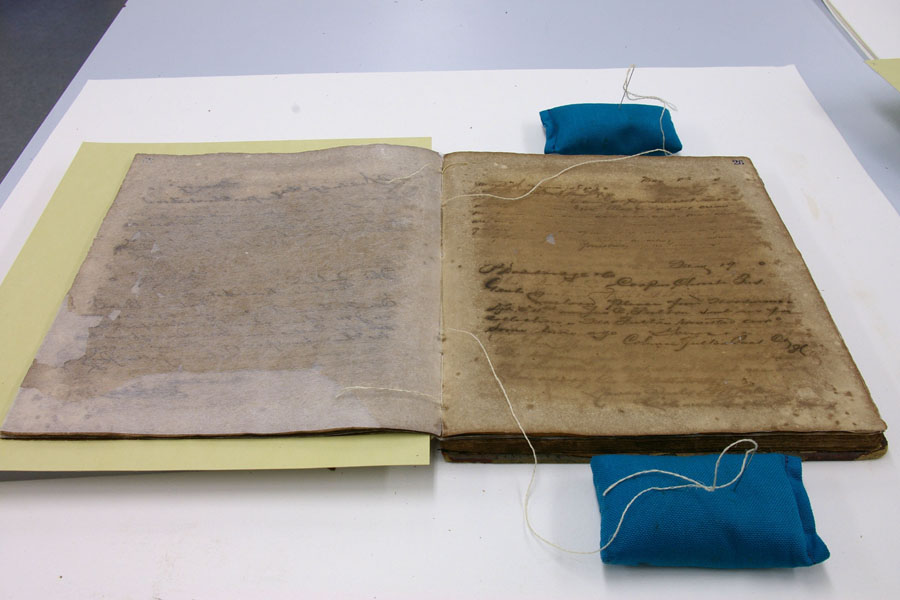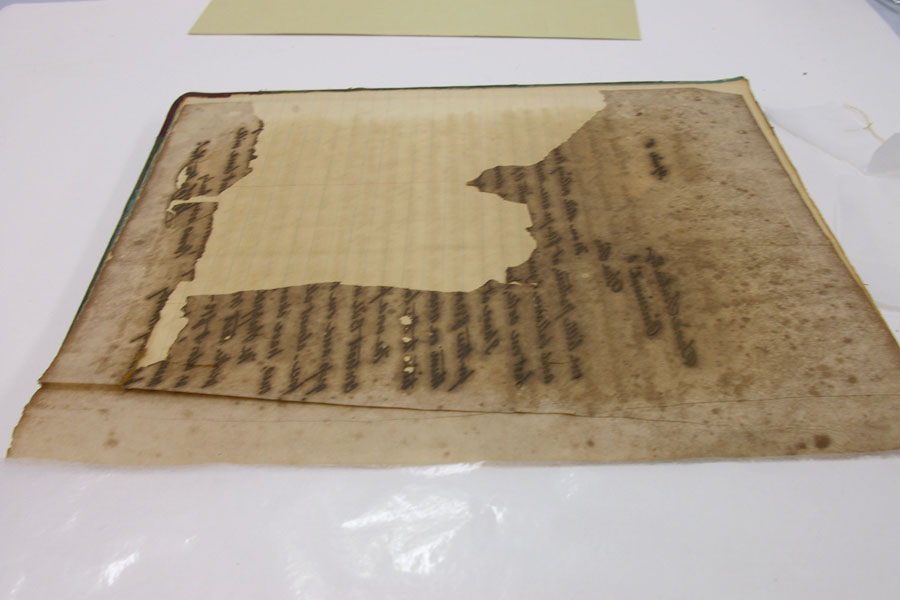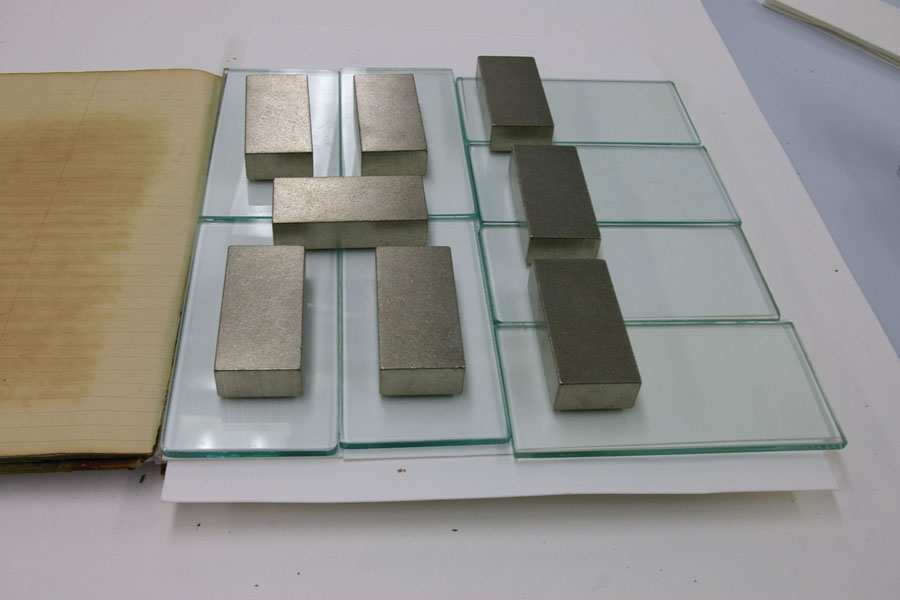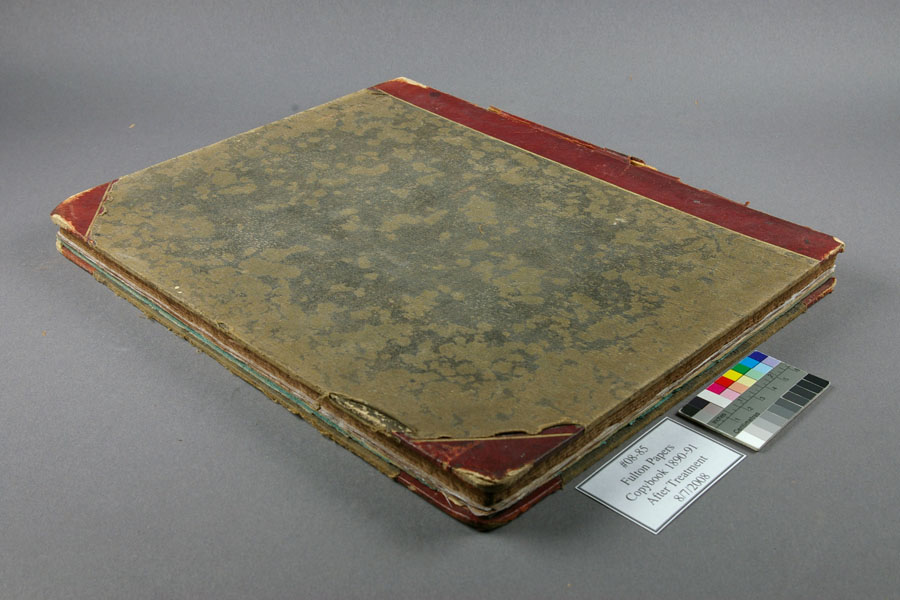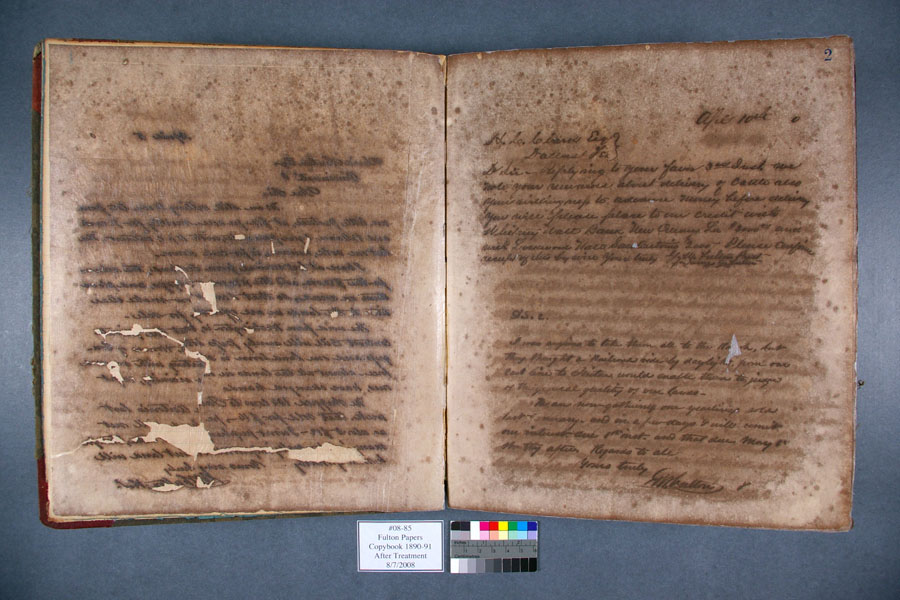Research
Letterpress Copying Books: Conservation & Preservation Implications
Photo Documention
Ballinger 1856
- Before
- During
- After
Fulton 1890-91
- Before
- During
- After
Click thumbnails to view images.
Abstract
Letterpress copying books can be found in most archival collections in the Western world. They contain a vast amount of information relating to the history of our culture, and many are quickly deteriorating to the point that records are being lost. Copying books often contain the only extant version of a document as the originals were routinely discarded or lost. Copying book paper and ink formulations were developed to have certain properties that optimized the copying process. The addition of gums and sugars, for example, encourages the ink to move from the original to the copying paper, while the lack of size and the translucence of the paper allow the writing to be read from the verso of the leaf. Because the inks and papers used are unique to copying books, their preservation needs are likewise unique. This study explores the preservation and conservation implications of these important and fascinating records.
This study investigates the current conditions and preservation needs of copying books in archival collections, and current conservation practices and storage issues related to copying books. Methodology includes a survey of the copying books in the collection of the Center for American History at the University of Texas at Austin and a questionnaire submitted to various professional archive and conservation list-serves. Treatment options were investigated after assessment of the results of both surveys. A selection of copying books from the Center for American History collection were examined, tested, and treated. Recommendations for storage, handling, and treatment are presented.
The results of the questionnaire illustrated a great need for research into best practices for treatment, storage and handling, and duplication of these materials. There was great variety in current practices highlighting the lack of standards, and many archivists are unclear about appropriate preservation plans for copying book collections. Through a relatively high response rate and many detailed comments, the respondents communicated a feeling of both urgency and enthusiasm in the field for research in this area.
Eight copying books were selected from the collection of the Center for American History for examination and treatment. The books exhibit a wide variety of conditions and were chosen to represent the range of possible conditions of letterpress copying books, including iron gall ink corrosion, embrittlement, and faint text. They consist of similar materials; namely, thin un-sized machine-made tissue paper, iron gall and aniline copying inks, and various half-leather and cloth case bindings. After extensive research and testing, appropriate treatments were determined for each book.
Various lining, mending, humidification and flattening, and aqueous treatments were performed in order to allow the safe handling of the fragile paper. The composition of the copying papers creates special challenges for conservation treatment. The inclusion of sugars, glycerin, and other humectants causes the paper to become quite sticky and difficult to handle, especially when wet, yet, the papers did not readily adhere to the solvent-set or heat-set lining tissues. The results of the treatments are presented and the most effective treatment procedures are described.




